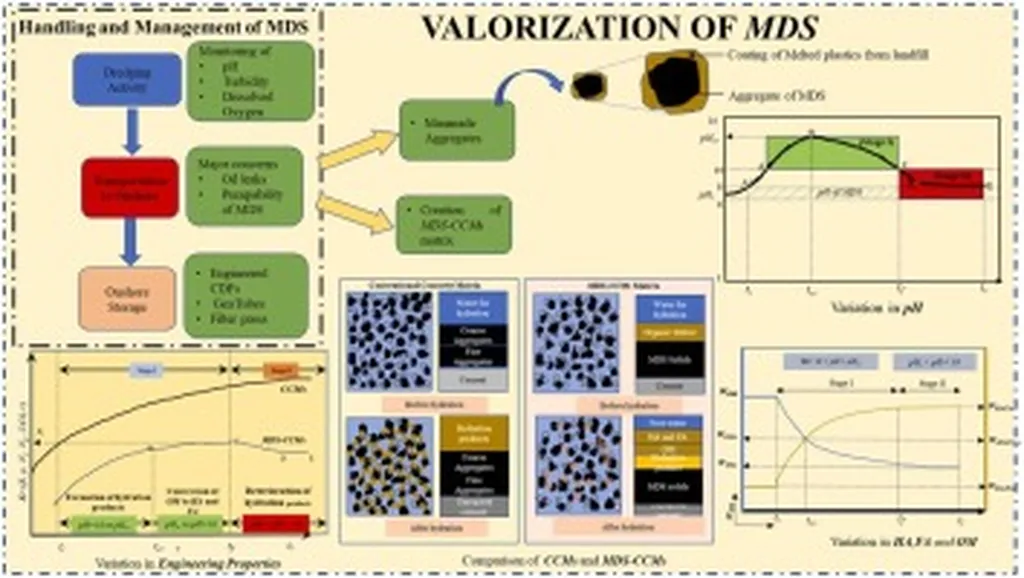In a significant stride towards enhancing the engineering applicability of dredged sediments, researchers have developed a low-carbon stabilization system that could revolutionize how maritime industries handle sediment management. The study, led by Jia Yuan from the College of Transportation Engineering at Dalian Maritime University in China, introduces a novel approach using medium-grade light-burned magnesia (LBM) and silica fume (SF) to stabilize dredged sediments, making them more robust and versatile for various applications.
Dredged sediments, often seen as a nuisance in maritime operations, can now be transformed into valuable resources. The research, published in the Journal of Materials Research and Technology (translated from Spanish), demonstrates how the newly developed stabilization system, dubbed LBM-SF, can significantly improve the mechanical properties of these sediments. By increasing the dosage of the stabilizer from 5% to 20%, the sediments undergo a remarkable transformation. The magnesium silicate hydrate (M-S-H) gel within the sediments evolves from a discrete petal-like structure to a continuous interwoven network, enhancing strength and increasing the tendency toward brittle failure.
This transformation is not just about making the sediments stronger; it’s about understanding how they fail. The study employs a multiscale approach, combining unconfined compressive strength (UCS) tests with digital image correlation (DIC) technology. This combination allows researchers to capture the mechanical response and full-field strain distribution of the stabilized sediments throughout the failure process. As Yuan explains, “The strain distribution transitions from uniform to localized during compression, and the local strain concentration coefficient increases, highlighting the role of strain localization in driving failure.”
The implications for the maritime industry are substantial. Stabilized dredged sediments can be used in various construction projects, reducing the need for virgin materials and lowering costs. This not only benefits the environment by reducing waste but also opens up new commercial opportunities for maritime companies involved in dredging and sediment management.
Moreover, the study’s development of a constitutive model integrating DIC-quantified strain localization parameters provides a data-driven approach to accurately characterize and predict the failure process. This advancement could lead to safer and more efficient use of stabilized sediments in construction projects, further enhancing their commercial viability.
In summary, this research offers a promising solution for transforming dredged sediments into valuable resources, benefiting both the environment and the maritime industry. As the world seeks sustainable and cost-effective solutions, this innovative approach could pave the way for a more efficient and eco-friendly future in sediment management.

